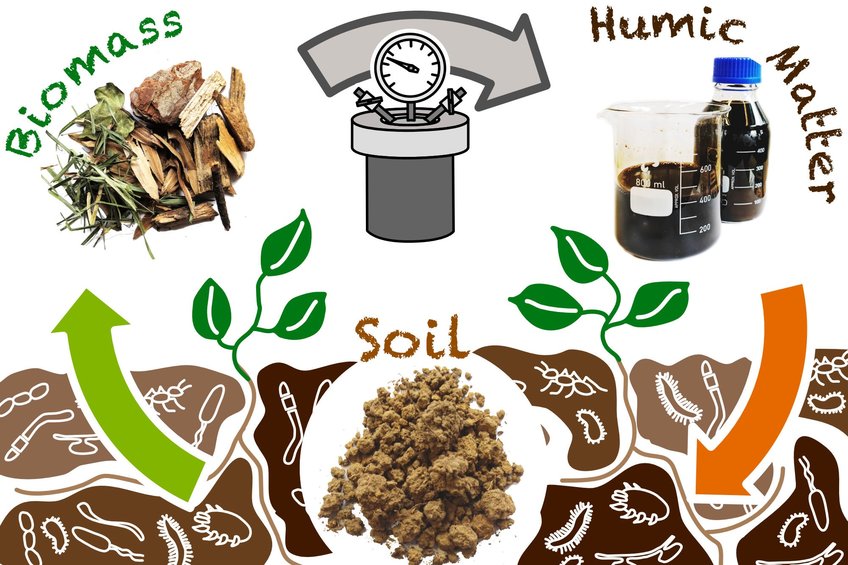
From Biomass to Humic Matter Systems
One third of soils worldwide is currently degraded due mainly to unsustainable farming practices, deforestation, industry, and urbanization. The consequences are unsettling and range from loss of biodiversity to reduction in carbon sequestration (the ability of soil to store carbon) and lower food security.The primary mechanism of soil degradation is the loss of humic matter, which is organic matter resulting from the natural decomposition of biomass (plants and animals). Humic soil is also known as “black gold” for its exceptional properties for improving soil health.
Humic matter has extreme structural heterogeneity, giving it systemic properties. For example, it is resistant to biochemical degradation even in environments with high biological activity. This resistance makes humic matter difficult for the microbiome to assimilate but also serves as a soil structuring agent. Moreover, humic matter performs essential functions thanks to its various structural groups (like phenolic, carboxylic, and carbonyl groups): they facilitate the transport of micro-nutrients and organic compounds, influence plant growth, and modulate the microbiome activity.
Our research explores how to accelerate the natural formation of humic matter, which typically takes centuries, to occur within a few hours using a process called 'hydrothermal humification.' Through hydrothermal treatment, a green chemistry method, we replicate the humification process in the laboratory, converting biomass waste into artificial humic matter (AHM) that mimics natural humic matter. Early studies indicate that AHM is effective in improving soil quality, increasing crop yields, and sequestering carbon dioxide.
Our approach leverages multidisciplinarity and spans from the synthesis to soil applications. Key research areas include:
- Hydrothermal synthesis and molecular mechanisms behind hydrothermal humification.
- Incorporation of various micro- and macronutrients into the structures of humic substances to improve the efficiency of the fertilizers produced.
- Humification mechanisms in natural environments under different microbial influences.
- Interactions between humic matter and minerals and organic compounds.
...